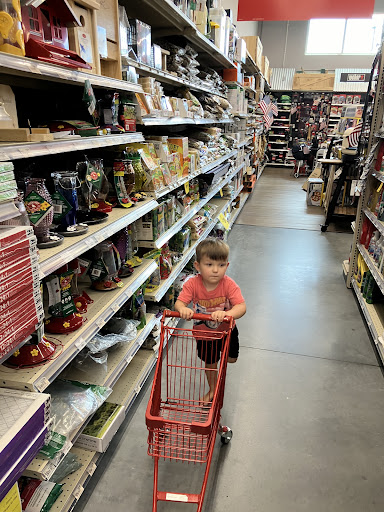Garden hose repair kit: Flawless Fix 2025
Fix Leaks Fast and Save Your Hose
A garden hose repair kit provides the essential components to quickly and easily mend damaged garden hoses, saving you from buying a costly new one. These kits typically include:
- Hose menders
- Male and female connectors
- Clamps (often stainless steel)
- Rubber gaskets
If your garden hose springs a leak, there’s no need to toss it. Repairing your hose is a smart move that saves money, reduces waste, and prevents minor issues from becoming major problems. It’s a quick DIY project that extends the life of your existing hose, keeping it working for years to come.
The helpful team at Lowcountry Ace has extensive experience with garden hose repair kits and can guide you through choosing the right solution for your watering needs. We’re here to help you get back to your garden quickly.
Garden hose repair kit definitions:
What’s in the Box? Anatomy of a Hose Repair Kit
When your hose turns into a miniature fountain, don’t head to the store for a new one. A garden hose repair kit is your garden’s best friend. These kits are like first aid for your hose, packed with everything needed to tackle common issues, from pinholes to busted connectors. With over 450 different hose repair products available on major retail platforms, it’s clear gardeners love this smart solution that gets them back to gardening quickly without breaking the bank.
What’s Included in a Standard Garden Hose Repair Kit?
A garden hose repair kit contains several key parts. The hose mender body is the central piece that connects hose ends or replaces a fitting. The barbed insert slides inside the hose, its ridges gripping the inner walls for a secure connection. For hose ends, a threaded connector (male or female) provides a new connection point for your spigot or nozzle. The securing mechanism, typically hose clamps (stainless steel or two-part screw), compresses the hose over the barbed insert. Finally, screws tighten the clamps, and rubber gaskets or washers ensure a leak-proof seal in female connectors.
Most kits fit common 5/8-inch and 3/4-inch hoses, and the team at Lowcountry Ace can help you find the right size for your Charleston garden.
Why Repairing is Smarter Than Replacing
Fixing your hose is a win-win for your wallet and the environment. Garden hose repair kits are budget-friendly, costing $5-$17, while a new hose can be $30 or more. Each repair reduces landfill waste, helping protect the Lowcountry environment and keeping the Charleston area beautiful. It’s also a quick solution, with most repairs taking just minutes with basic tools. Repairing allows you to salvage high-quality hoses you’ve already invested in. Plus, kits offer customization options—cut a hose to the perfect length and add new fittings, or even create specialty hoses.
A Roundup of Repair Kit Materials: Which is Best for You?
When choosing a garden hose repair kit, the fitting material is a key consideration. Materials differ in durability, corrosion resistance, and ease of use. Understanding these differences helps you select the best kit for a lasting repair.
Here’s a quick look at the most common materials you’ll find in hose repair fittings:
| Material | Durability | Cost | Corrosion Resistance | Ease of Use |
|---|---|---|---|---|
| Brass | Excellent | Higher | Excellent | Moderate |
| Aluminum | Good | Moderate | Good | Moderate |
| Plastic | Fair | Lower | Excellent | Easy |
For Maximum Durability: Metal Repair Kits
For a repair that stands the test of time, metal is the way to go. Fittings made from brass, aluminum, or zinc offer top-notch strength and handle outdoor elements well.
Brass fittings are the “gold standard” for a reason. They are strong, resist rust, and handle high water pressure. While they cost more upfront, their longevity saves money over time.
Aluminum fittings are another solid, lighter-weight choice with good durability and corrosion resistance; just be careful not to overtighten the screws.
You’ll also find zinc fittings in heavy-duty menders, offering a balance of strength and affordability. For most standard garden hoses, we suggest metal kits for their strong, leak-proof, and reliable performance.
For Simplicity and Expandable Hoses: Plastic Repair Kits
Plastic garden hose repair kits have their own advantages. They are lighter than metal, completely rust-proof, and often lower cost. Their main advantage is being ideal for flexible or expandable hoses. Standard metal barbs can damage the unique inner tube of these hoses, whereas plastic kits are designed to clamp securely without causing harm. It’s crucial to match the kit to your hose type, as packaging will often specify it’s only for expandable hoses.
Plastic kits also offer ease of installation, sometimes requiring no tools. However, be aware that plastic can become brittle with prolonged sun exposure (UV degradation) and is generally less durable than metal for traditional hoses.
How to Perform a Flawless Hose Repair
Repairing a leaky garden hose is a satisfying DIY project anyone can tackle. With the right tools and a few simple steps, you can turn a frustrating leak into a reliable repair and get your watering tasks back on track. It’s empowering to fix something yourself!
Essential Garden Tools for the Job
Gather your supplies before you start for a smooth process. You’ll need a sharp utility knife or hose cutter for clean, straight cuts (essential for a good seal) and a screwdriver to tighten the clamps from your garden hose repair kit. Pliers or a vise can help grip snug parts, and a vise can hold the kit for a tighter fit. Also have rags for cleanup, safety glasses, and consider plumber’s tape for threads or replacement washers for simple connection leaks.
Scenario 1: Fixing a Leaky or Damaged Hose End
A common leak source is a damaged hose end with worn material or stripped threads. First, cut off the old fitting with a utility knife, making a clean, straight cut just behind the damage. Next, insert the new mender. Slide the clamp from your garden hose repair kit onto the hose, then firmly push the barbed end of the new connector into the hose. Pro tip: A heat gun can soften a stiff hose, making it easier to slide over the mender. Once in place, tighten the clamp securely over the part of the hose covering the barbed fitting to create a watertight seal. Finally, check for leaks by slowly turning on the water. If you see drips, tighten the clamp more. This gives you fresh threads for your nozzle, solving the problem.
Scenario 2: Mending a Cut or Puncture in the Middle of the Hose
For a cut or puncture in the middle of the hose, a mender can splice the ends back together. First, locate the leak by briefly turning on the water. Then, turn the water off and make two clean cuts with your utility knife, removing the damaged section. Next, use a hose-to-hose mender. Slide a clamp from your garden hose repair kit onto each hose end. Push the mender’s barbed ends into each hose section until fully seated. Finally, secure both clamps tightly with your screwdriver over the barbed sections.
For a reliable repair, ensure cuts are flat and even, tighten clamps securely, and consider cleaning the interior of older hoses first.
Choosing the Best Garden Hose Repair Kit for Your Needs
Picking the right garden hose repair kit is crucial. It’s not about grabbing the first one you see; it needs to match your hose, the damage, and your durability needs. We’re here to help you make a smart choice.
Match the Kit to Your Hose Size
This step is critical to avoid a leaky mess. Garden hoses are typically 5/8-inch (most common) or 3/4-inch (for larger jobs). You must measure your hose’s internal diameter (ID). While some kits claim to be universal, a snug fit is key to preventing leaks. A loose fit will leak, so getting the size right is essential for a repair that holds water.
Understanding Clamp Types for a Secure Seal
The clamp in your garden hose repair kit must be firm and secure. Stainless steel clamps are a popular choice because they’re strong, resist rust, and tighten well. You might also see two-part screw clamps, though some find them bulky and prone to loosening. For stubborn leaks, some pros use single-use Oetiker clamps, which create a very tight seal but require a special tool. When choosing, consider safety; avoid sharp edges and look for clamps that spread pressure evenly for a strong, leak-free seal.
Tips for a Leak-Free Repair
For a repair that lasts, follow these tips. Always make a clean, straight cut with a utility knife; a jagged cut won’t seal. Consider your hose wall thickness, as some kits don’t work with very thick hoses. For older hoses, clean the hose interior to remove buildup that can prevent a good seal. Ensure proper clamp tightening—firm enough to prevent leaks but not so tight you strip the screws. Don’t forget to check the washer in the female coupling; a worn or missing washer is a common leak source. For workarounds for difficult hoses, some DIYers adapt a PEX crimp ring and tool from plumbing for an incredibly secure connection.
Frequently Asked Questions about Hose Repair
A leaky hose is frustrating, but many common problems have simple DIY fixes. Here are answers to the most common questions we get about garden hose repair:
How do I fix a leaking garden hose connector at the spigot?
A drip at the spigot is a common, easy-to-fix issue. First, check the rubber washer inside the female coupling (the part that screws onto the spigot). Old, flattened, or missing washers are a primary cause of leaks. Simply replace that rubber washer. If that doesn’t help, the coupling itself may be cracked or stripped. You can still avoid buying a new hose. Cut off the damaged end and attach a new female hose mender from a garden hose repair kit. Clamp it down tightly for a fresh, leak-free connection.
Can I repair a kinked garden hose?
A simple kink usually doesn’t need a repair kit; just straighten it. However, repeated kinking in the same spot can weaken the material, causing it to split or crack. If a crack develops, it can be repaired. Treat it like any other puncture: cut out the damaged, cracked section and use a hose mender to splice the two good ends back together with clamps, as explained earlier.
Are repair kits for expandable or pocket hoses different?
Yes, they are very different. Expandable or “pocket” hoses have a unique flexible inner tube and a fabric outer layer. Standard metal garden hose repair kits have barbed fittings that will puncture the delicate inner tube of an expandable hose, making the problem worse. Expandable hoses require specific plastic repair kits designed to clamp onto the inner tube without piercing it. Always check that the kit is labeled for “expandable” or “pocket” hoses. The packaging often specifies it’s “only fit for expandable garden hose” and may list compatible dimensions (e.g., ID≈0.23″/6mm, OD≈0.36″/9.2mm). Double-check to get the right fit.
Get Back to Your Garden with a Reliable Repair
We hope this guide has shown how easy it is to fix a leaky garden hose. With a simple garden hose repair kit, you can tackle common problems yourself instead of buying a new hose.
You’ll save money, reduce environmental waste, and get the satisfaction of a successful DIY project. A reliable repair means no more soggy shoes or wasted water, so you can get back to watering your garden, washing the car, or keeping your yard looking its best.
The helpful team at your local Lowcountry Ace is always here to help. If you need guidance choosing the right garden hose repair kit, determining your hose size, or want extra tips, we’re ready to share our know-how. We have a great selection of kits and parts to ensure you find what you need.
Don’t let a leaky hose spoil your day. Visit Lowcountry Ace, grab a garden hose repair kit, and enjoy the peace of mind that comes with a perfectly working hose.
Find all your home improvement supplies
Lowcountry Ace Hardware: Your one-stop shop for home improvement. We offer quality products from trusted brands and expert advice from our experienced staff. Located on James Island, visit us for tools, hardware, fishing gear, power tools, building materials, grills & smokers, electrical and plumbing supplies, and more.

















